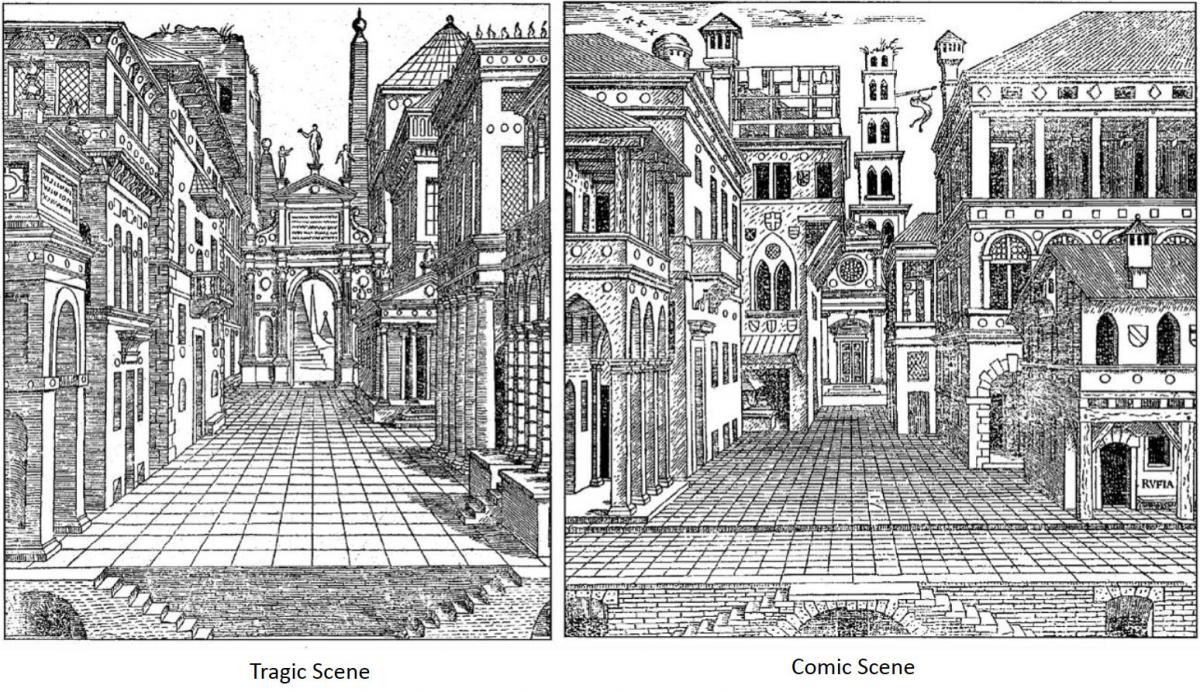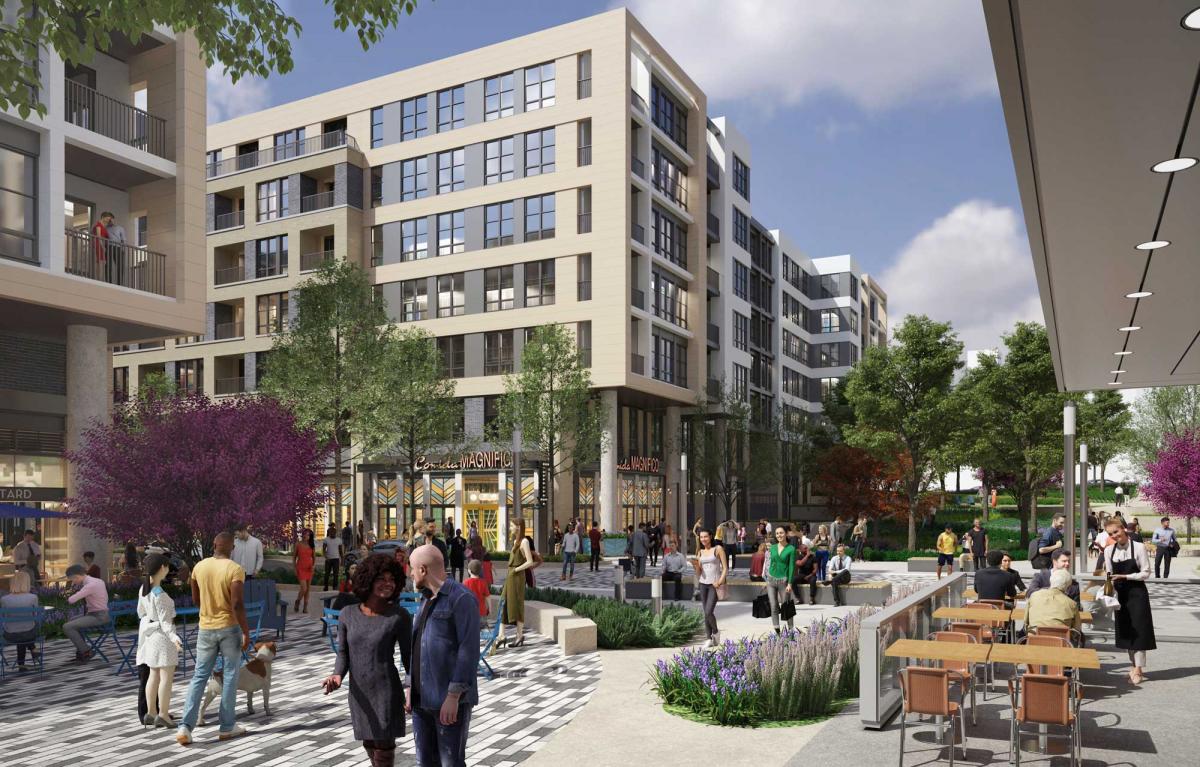
Contemporary Vernacular: A style for everyday city life
This is Part 2 of a 2-part series. See Part 1 here.
“Developer Chic,” “Fast Casual,” “LoMo” (for low Modernism), and “Boxy” are all epithets critical of the architectural building types and style of many recent, mixed-use residential buildings. Clearly pejorative, it needs to be asked; are the sentiments valid?
One cannot talk about “style” without talking about “character.” Character used to be widely understood as an important aspect of building; just think about the character difference between temples in the Tuscan or Composite order. Describing character is the drive of the intentional differentiation between Serlio’s Tragic and Comic scenes. Character is the differentiation of mood effected by organization, composition, detail, scale, material layering, color, and other characteristics. The Tragic Scene is all classical buildings while the Comic Scene is a collage of a number of styles laid over each other as if buildings were repurposed and assembled over time. Some of the differentiating aspects are formal or informal; serious or playful; civic or domestic; orchestrated or spontaneous; timeless or ephemeral; and subsidized versus market forces.

This discussion will suggest that “Contemporary Vernacular” can describe the style of numerous contemporary, mixed-use residential buildings and situate them as appropriate and worthy contributors to good neighborhoods and cities. These are little “A” architecture buildings and have always played a supportive role in the city. What makes them big “A” architecture buildings is playing this role appropriately. Obviously, we are not talking about the “look at me” attention seeking versions that tend to discredit the rest. Taste matters, manners matter. “Seldom prominent and never wearisome” is always good advice. This style, when done reasonably well, is a good and appropriate language for contemporary background buildings that make up the Comic scene in our neighborhoods; the streets and spaces that are the settings for active commercial and residential everyday life.
What are the characteristics of the Contemporary Vernacular style? First, it is vernacular. That is to say it is popular, not ideological, and not a manifestation of “the spirit of the age.” Rather, this architectural character is an expression of market-savvy buildings constructed of contemporary, cost-effective materials and typical construction techniques. Secondly, it is contemporary. It employs abstraction, avoids traditional mouldings, and often tries to achieve richness through the layering of materials and elements. It deploys planes of wall surface; usually punched window openings or continuous window walls; applied ornamental architecture typically of grid frames, horizontal bands, or vertical fins; cantilevered and inset balconies; tolerates staggered window openings; and a more pronounced use of material and color. The best examples deploy abstract layered elements in such a way that the buildings exhibit a richness and variety of visual cues that sustain one’s interest and attention.

The aspect of these buildings that might be distinctively appropriate is their dynamic and vital character arrived at through this style of the buildings. Often, traditionally styled buildings are too heavy, too stiff, or too serious for commercial mixed-use architecture. There are plenty of examples of buildings that are just depressing for how neoclassical and stiff they are and how misaligned they are with the character of the place. A too-serious building on a commercial street is as discordant as a too loud building on a civic square. Spirited Comic scene classical buildings are few and far between.
Clearly there is a wide range in the design quality of these buildings and in the quality of the materials and workmanship. There are better and poorer examples of Contemporary Vernacular buildings, and the poorer ones are the ones that try much too hard to be noticed. But they are noticed, for all the wrong reasons, and paint the others with the same brush. The abstract issues of appropriate scale, detail and interest, surface and depth, orchestration and syncopation, agitation, cacophony, harmony, variety, interest, monotony—all apply. And certainly, the urban design aspect of a pedestrian-friendly, humane ground floor is critical to the success of the building. But exactly the same aspects apply to any traditional building; classical or other. It will be argued that the hit rate for traditional buildings is higher than for contemporary vernacular buildings. That may be true, but as the motifs and composition of the better examples are disseminated and utilized, the contemporary vernacular style will mature and become qualitatively better. And it always helps when the street trees grow in. The contemporary vernacular style can be visually rich and playful, yet elegant. It is an appropriate style for an urban stage set of great streets and spaces for the human drama of everyday life: living, shopping, communing with neighbors, and entertaining.




